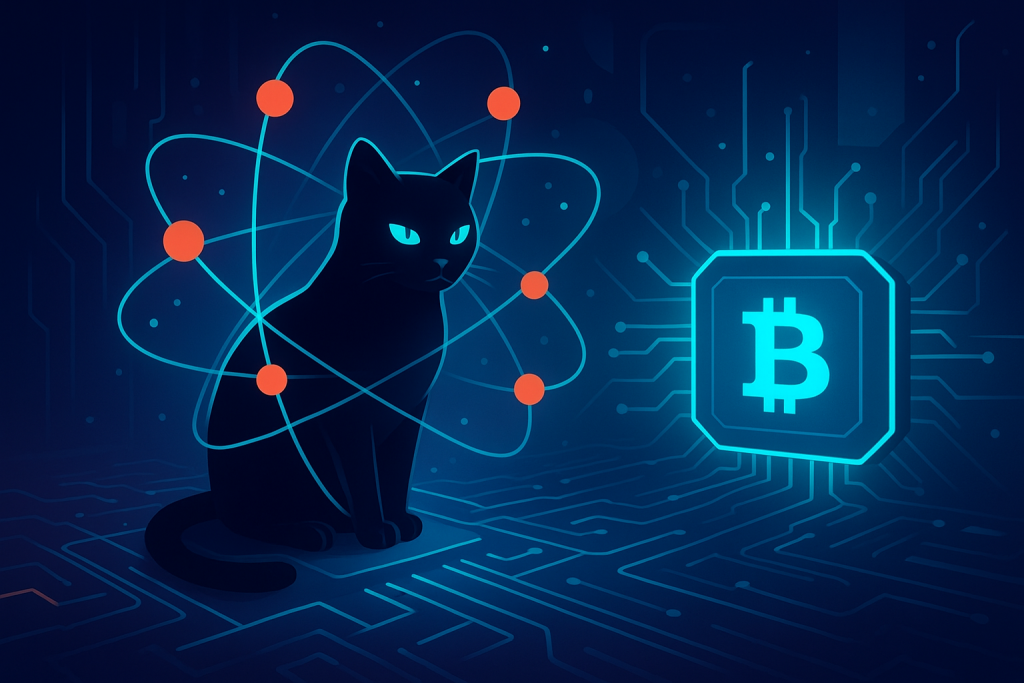IBM has achieved a major milestone in quantum computing by creating the world’s largest entangled quantum state consisting of 120 qubits. The breakthrough, nicknamed the “quantum cat”, could mark a step toward developing computers powerful enough to break the cryptography securing Bitcoin (BTC) and other digital assets.
According to a new study titled Big Cats: Entanglement in 120 Qubits and Beyond, IBM researchers successfully generated a fully entangled, multi-qubit system — a critical advancement for building fault-tolerant quantum computers capable of running algorithms that surpass today’s cryptographic protections.
“We aimed to create a large-scale entangled state on a quantum processor using a minimal-noise circuit,” the researchers explained. “By combining techniques from graph theory, stabilizer groups, and circuit ‘uncomputation,’ we achieved the cleanest implementation yet.”
The experiment used a special class of quantum states known as Greenberger–Horne–Zeilinger (GHZ) states — sometimes called “cat states,” after Schrödinger’s cat paradox. In these states, all qubits exist simultaneously in both 0 and 1, behaving as one coherent object.
Beyond theoretical implications, GHZ states have been used across multiple platforms — ions, photons, and superconducting qubits — as benchmarks for quantum systems. Due to their extreme sensitivity to imperfections, they also play a vital role in quantum sensing, pushing the limits defined by the Heisenberg uncertainty principle.
To achieve the 120-qubit record, IBM used superconducting circuits combined with an adaptive compiler that maps operations to the least noisy regions of the chip. The company also implemented temporal uncomputation, a method that “disconnects” qubits once their role in the circuit is complete, allowing them to stabilize before being reintegrated into the system.
The resulting GHZ state fidelity reached 0.56 — exceeding the 0.5 threshold that defines genuine multi-qubit entanglement. In simple terms, all 120 qubits acted as one unified, coherent system.
Because verifying such a state through brute-force computation would take longer than the age of the universe, IBM used two statistical validation methods: parity oscillation measurement and direct fidelity estimation (DFE).
While current quantum processors still lack the capability to threaten Bitcoin’s encryption directly, IBM’s achievement demonstrates clear progress toward that possibility.
According to research group Project 11, roughly 6.6 million BTC (≈ $767 billion) remain theoretically vulnerable to quantum attacks once the technology advances enough to reconstruct private keys from public ones.
“One of Bitcoin’s greatest paradoxes is what happens to Satoshi’s coins,” said Project 11 founder Alex Pruden. “They can’t be moved, and Satoshi is likely gone. Those coins represent a huge part of the supply — they could either be burned, redistributed, or eventually claimed by a quantum computer. There are no other options.”
A sufficiently powerful quantum computer could, in theory, derive private keys from public addresses and steal funds before a transaction is confirmed.
Although IBM’s 120-qubit system cannot yet perform such an attack, its success signals the steady approach of that capability.
IBM’s roadmap already includes a plan to build a fault-tolerant quantum computer dubbed Quantum Starling by 2029, which could pose a real threat to existing cryptographic standards.
Other tech giants are also racing ahead: Google Quantum AI recently unveiled its 105-qubit Willow processor, outperforming classical supercomputers in a physical simulation. Meanwhile, HSBC has begun applying quantum algorithms to bond trading, and BlackRock has warned that quantum advancements could endanger not only Bitcoin but the broader digital financial infrastructure.
Even governments are taking precautions — in August, El Salvador moved over 6,200 BTC to new wallets to mitigate potential risks from future quantum attacks.


